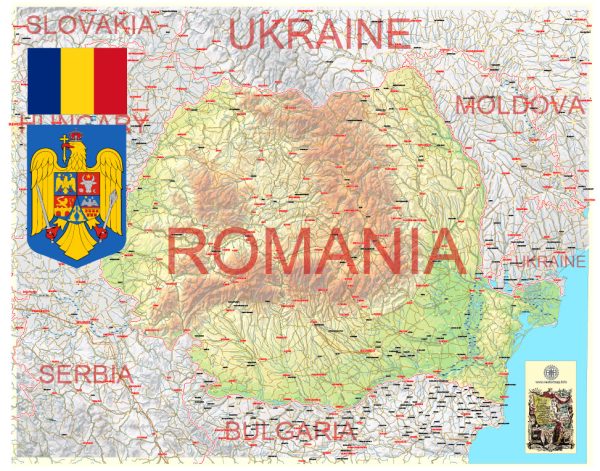Romania’s history of urban development is rich and diverse, shaped by various historical, cultural, and geopolitical factors. The evolution of urban centers in Romania can be traced back to ancient times, and the country has witnessed the influences of various civilizations. Here is a brief overview of Romania’s history of urban development:
- Ancient Period:
- Dacian Civilization: Before the Roman conquest in 106 AD, the indigenous Dacian civilization inhabited the territory of present-day Romania. The Dacians had their fortified settlements and urban centers.
- Roman Influence: With the Roman conquest, urbanization flourished. Romans established colonies, built roads, and developed urban centers, including Ulpia Traiana Sarmizegetusa, the capital of Roman Dacia.
- Medieval Period:
- Migration Period: During the Migration Period, various nomadic tribes, such as the Visigoths, Huns, and Bulgars, swept through the region, influencing settlement patterns.
- Byzantine and Ottoman Influence: In the medieval period, the Byzantine Empire and later the Ottoman Empire had a significant impact on the urban development of the region. Fortified towns and trading centers emerged.
- Late Medieval and Early Modern Period:
- Transylvania and the Saxons: Transylvania, a region in central Romania, experienced the influence of the Hungarian and Saxon settlers who established fortified towns and contributed to the economic development of the region.
- Wallachia and Moldavia: In the southern and eastern regions, Wallachia and Moldavia developed their own urban centers, influenced by trade routes and the Orthodox Christian culture.
- 19th Century:
- Independence and Modernization: The 19th century saw the unification of Wallachia and Moldavia in 1859, forming the basis for modern Romania. Urbanization accelerated with industrialization and modern infrastructure development.
- 20th Century:
- Communist Period: The mid-20th century brought significant changes during the communist era. Urban planning was influenced by socialist principles, leading to the construction of large housing complexes and industrial zones.
- Ceaușescu’s Urban Policies: In the 1970s and 1980s, Nicolae Ceaușescu’s regime implemented radical urban development policies, including the demolition of historic neighborhoods and the construction of grandiose projects like the Palace of the Parliament in Bucharest.
- Post-Communist Era:
- Transition and Challenges: After the fall of communism in 1989, Romania underwent a period of transition. The focus shifted towards market-oriented economic development, and urban areas experienced changes in infrastructure, architecture, and governance.
- EU Accession: Romania joined the European Union in 2007, leading to increased investment in urban development projects, infrastructure improvements, and alignment with EU standards.
Today, Romania’s urban centers showcase a blend of historical charm, socialist-era architecture, and contemporary developments, reflecting the country’s complex and dynamic history. Bucharest, the capital, remains a vibrant hub of culture, commerce, and innovation. Other cities, such as Cluj-Napoca, Timișoara, and Iași, also contribute to Romania’s diverse urban landscape.


 Author: Kirill Shrayber, Ph.D.
Author: Kirill Shrayber, Ph.D.